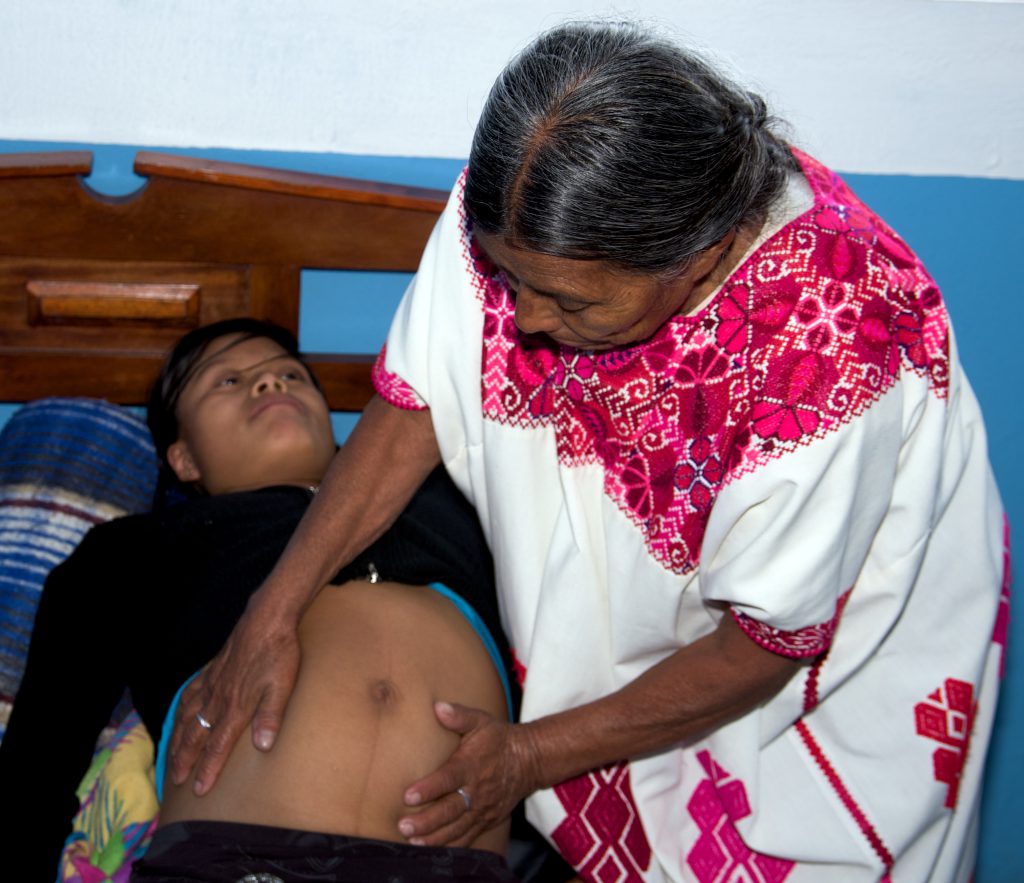How Natural Birth Became Inaccessible to the Poor – SAPIENS

While many of the birth practices in humanized hospitals aim to “revive” the techniques of traditional midwives, ironically, traditional midwifery is being prohibited in many of the poor Indigenous communities where these techniques have endured for centuries. These birth techniques include massaging the pregnant woman’s belly to position the fetus, preparing herbal teas to stimulate the birthing process, various birthing postures that broaden the birth canal, ritual burying of the placenta near the home, and postpartum restoration through consuming bone broth and taking an herbal bath.
This threat against traditional midwifery practice has been institutionalized over the last decade: The government provides monthly stipends to the poorest quarter of the population conditional on their compliance with several rules, one of which is that pregnant women give birth in a government hospital. Traditional midwives like Leonila are required to direct all births to hospitals. And they are threatened with murder charges should a woman or baby die in their care, no matter how far they live from hospitals. Some of the women I met are several hours by bus or pickup truck from the nearest regional hospital where they are mandated to give birth.
✽
These requirements might make sense if the quality of medical care was much higher in hospitals, as the government claims, or if traditional midwifery was resulting in particularly high levels of injury or death. But my research did not show either of these to be true. On the contrary, I found that women were too often receiving inferior care in hospitals, whereas I found the quality of care by midwives to be superior.
While the government blames midwifery practices for high maternal and infant mortality rates in Mexico’s most impoverished regions, I noticed that racial discrimination and insufficient infrastructure were recurring themes when interviewees recounted the deaths of wives, sisters, friends, and newborn children. People spoke of village clinics that are sporadically closed, chronically understaffed, and lacking in basic medications and instruments; crumbling roads that make emergency trips to the regional hospital extremely risky; and overcrowding at regional hospitals that leads to long wait times and forces women to lie in hallways on cardboard “cots” when all hospital beds are taken.
Given these dire conditions, many of the traditional midwives I interviewed feel that it is their ethical obligation to provide midwifery services to fellow villagers who seek their help. And while their interventions are in direct defiance of official government mandates, their actions are actually abetted by physicians in government posts who wish to wash their hands of potential responsibility for a maternal or infant death. At times, traditional midwives are directly encouraged to intervene: For example, a medical resident I talked to told me that he would rather refer a potential obstetric emergency to the local midwife than take the blame for whatever poor outcome might result. At other times, traditional midwives feel indirectly morally obligated to intercede in cases where medical staff fail to serve women: Another provider told me that his clinic will refer an obstetric emergency to the regional hospital knowing that the woman is likely to die in transit, since it is better that her death be logged as “in transit” than as having occurred in his clinic.
The Mexican government often uses traditional midwives as scapegoats; meanwhile, there are no official statistics on the birth outcomes of these midwives. The midwives I met had varied degrees of abilities and knowledge; some maintain private logs, which they keep secret from health officials, detailing thousands of successful births. The reputations of the most successful midwives, such as Eugenia, a renowned traditional midwife in the high mountains of Veracruz, are premised on empirical observations of their birth outcomes by villagers and clients from the surrounding region. They gain new clientele through word of mouth. Even one negative outcome can severely tarnish a midwife’s reputation. (This empirical, community-based form of ongoing validation runs counter to Western demands for statistical proof.)




